LG has just unveiled the LG G2 smartphone and we can safely say that this is the first in a long time that the launch of an LG smartphone has actually made us excited. But how will LG make a dent in the market that has been, by all counts by a smartphone giant that descends from its own home ground of Korea – Samsung.
The last someone was really excited about LG smartphones was when it revealed phones from the Optimus series, such as the LG Optimus Black. But, it seems LG has stricken back at the smartphone market, with the G2. So what does this smartphone possess, and why should we be excited by it in the face of smartphones such as the HTC One and Samsung Galaxy S4?
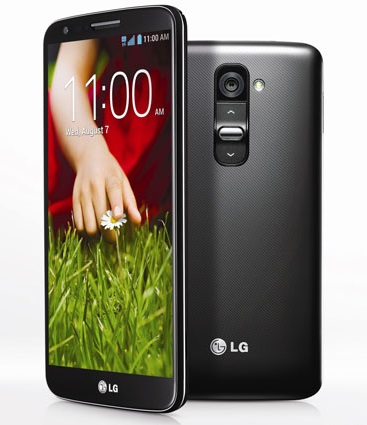
Lets have a look at it in detail.
The G2 is a large screen phone which is currently the mark of the times. The G2 possesses a form factor of 139 x 71 x 8.9mm which might seem too big at the first go, but the truth is that it is just about right and stacks up good for our fondness for large-screen phones. However, where the LG G2 trumps other phones is that it has actually more screen space resting in a similar frame – The LG G2 has actually lent the area generally covered by the plastic casing in other phones to the screen itself. So you not only get a longer screen (5.2-inches) but also a wider one. It is not like the plastic casing has been completely obliterated, it is still there but in a minimalist way.
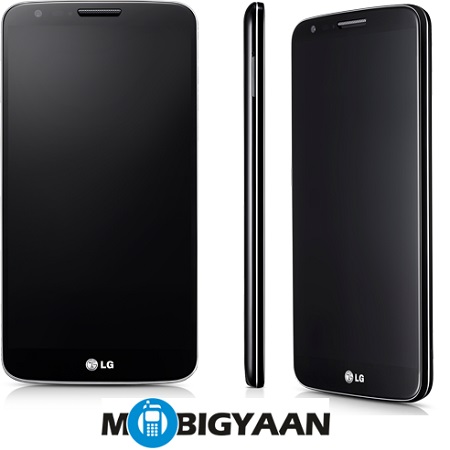
The phone owing to its specs would feel neither too heavy nor too light at 143 g.
The body is not metallic or glass, but plastic which is kind of sad since such as wider range of materials is available including a carbon and silicon which almost every manufacturer is trying out.
But the trump card of the handset is that it has done something different from other smartphones – it has placed the power button at the back along with the volume rocker. Now those buttons sit comfortably at the back, leaving space at the front and sides and finally sensibly using the large space available at the back of the handset. If there was nothing else, just this feature would set it apart. How this feature works out will only be possible to know once it is out in the real world.
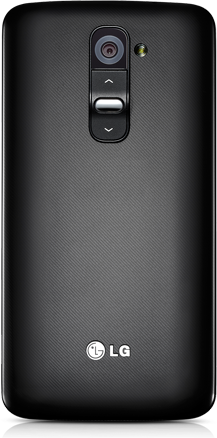
The screen is another feature, that sets the tone of this handset as a premium handset – It now has a 5.2-inch screen. But the real story is not the 0.2 inches but the difference of the area covered which becomes more evident when compared to one of its competitors – 115 x 65 x 132mm compared to Samsung Galaxy S4’s 111 x 62 x 127mm for a 5-inch screen. This is the closest ‘edge-to-edge’ display we have ever seen, but LG hasn’t increased the display density or resolution at 423ppi and 1920 x 1080p respectively, which is a cause for concern. Although, we hope its other features like a Graphic RAM make up for that and you don’t even notice it.
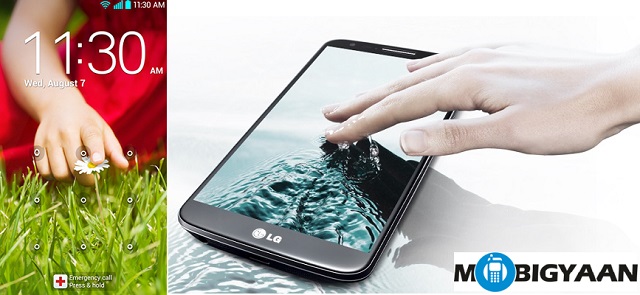
Looking under the hood, we find that it has a powerful 2.26 GHz Snapdragon 800 processor which sounds like quite a lot of power. While Snapdragon 800 is set to be quite a popular processor in the near future, the G2 stands to benefit from being the first major phone to come out with such a powerful processor.
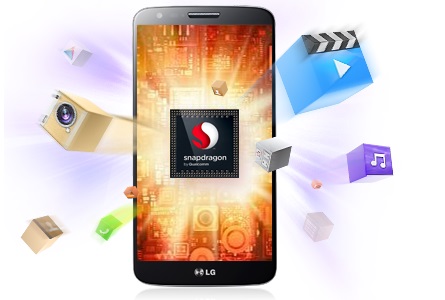
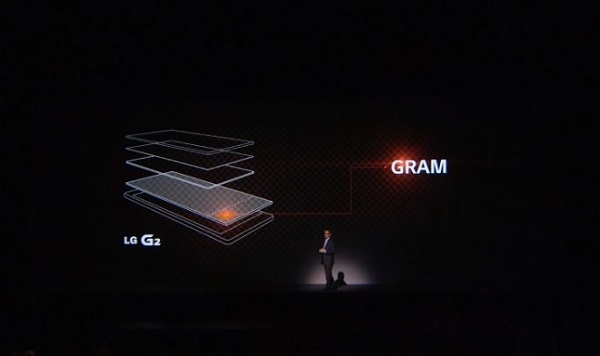
The phone is supported by a 2 GB RAM which lend a helping hand to support the processor. While the 2 GB RAM sounds great, its not just a RAM but a Graphic RAM (GRAM). How this works is that Using GRAM, anything displayed on the device the GPU sends the frame image to the display panel 60 times per seconds by displaying the same frame over and over again without any communications with the GPU. However when the content changes, the process is started all over again.
When the GRAM adds a memory cache to the display panel to display the same frame, the CPU and GPU are not required to carry any operations, as such parts of the SoC can be shutdown. This helps in saving energy and battery. The company claims that the technology reduces the display’s energy consumption by 26 percent. The lowered refresh rate helps in saving up to 10 percent of battery, thus increasing the battery life.
LG has mentioned both 32 GB and 16 GB models for the G2 while currently only the 32 GB model is listed online. If the company really wants to compete with brands in the high-range smartphone category, it should come out with a 64 GB version too. There is no MicroSD support, since it seems like one tightly wound up unit.
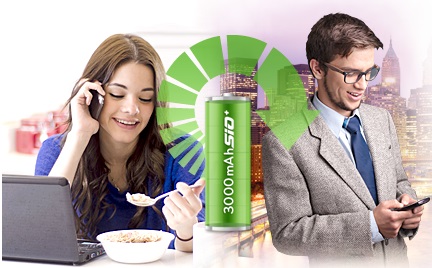
The handset has all the connectivity features that 4G LTE handsets generally have. It is also based on the LTE-A technology which should provide you faster internet access over Wi-Fi. Its 3000 mAh battery seems about ready to handle the load of a handset like this.
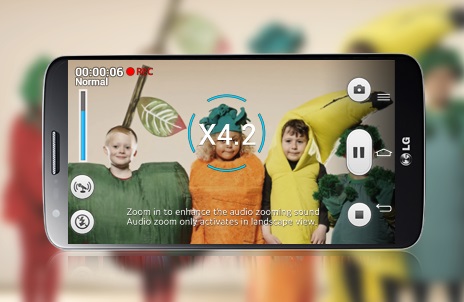
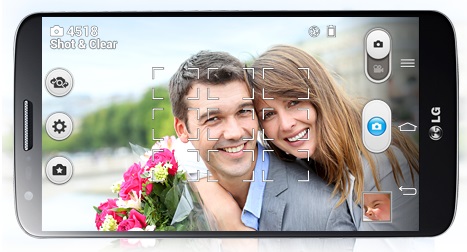
There is also a 13-megapixel camera on board and 2.1-megapixel camera, both seem like the general high-end smartphone deal. The only thing special about this camera is features such as Optical image stabilization which minimizes the blurring of images from shaking.
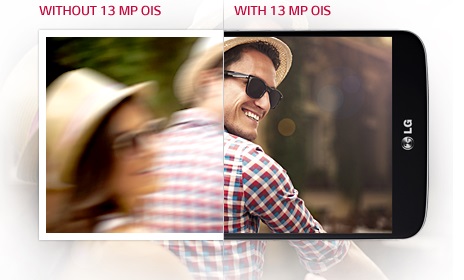
The OS and UI are something worth talking about. Along with Android 4.2.2 – Jelly Bean, it throws in the LG UI with features like KnockOn – by tapping on the screen twice, you can turn it on or off. These kind of little surprises do add to a smartphone experience as we have seen in the past.
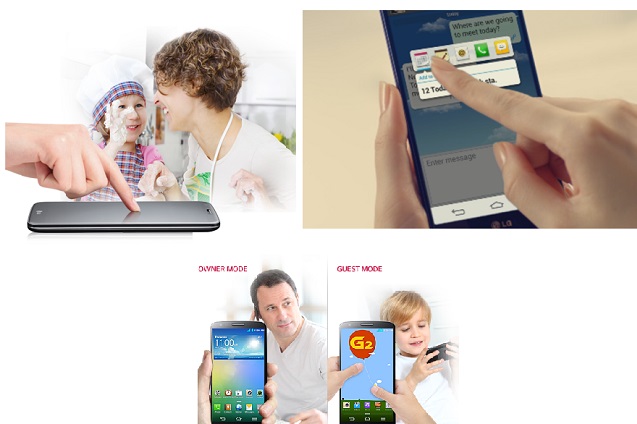
Another such feature is Audio Zooming which lets you control which of its three built-in microphones should amplify the audio.There are also features such as Text Link in the mix which lets you easily transfer texts fro one app to another and a guest profile which restricts access if you have to lend your phone to someone else.
Sadly, there is no Google Play edition of this phone in the works as of now.
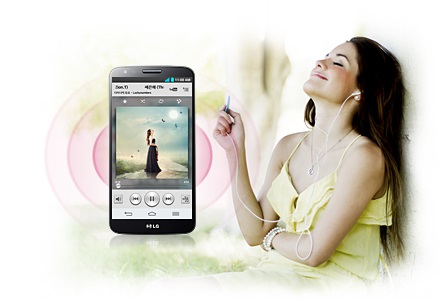
The phone is NFC and infrared apable. LG has also put in a 24-bit, 192 kHz Hi-Fi playback speaker which should work out great if you love blasting the tunes from your handset.
We think the phone should see a global release by next month. Trust us to keep you posted.
